Boosting Customer Loyalty by 90%: MIXIT’s Enhanced Loyalty Program and Insights from the Head of CRM Marketing
Boosting Customer Loyalty by 90%: MIXIT’s Enhanced Loyalty Program and Insights from the Head of CRM Marketing
Challenges
Keep loyal customers in the online store and retail network
Solutions
Transfer more customers to the most loyal customer segment and the active bonus user segment
Enrich the loyalty program with new tools and campaigns
Enrich the loyalty program with new tools and campaigns
Results
The segment of the most loyal customers who make purchases more often than others and use bonus points has increased by 90%
99% of customers use a loyalty card
The number of orders using points increased by 105%
The frequency of purchases from loyalty program participants who spend bonus points remains 1.5 times higher
99% of customers use a loyalty card
The number of orders using points increased by 105%
The frequency of purchases from loyalty program participants who spend bonus points remains 1.5 times higher
Integrated with:
ERP, Loyalty Program Software
My name is Olga Khomich, I am the head of CRM marketing at MIXIT. An important thing to note about our customers is that those who have an activated loyalty card purchase 1.5 times more frequently than those who do not, which is why we aim to increase this segment. In this article I will share with you:
- How we built up this segment, resulting in a 90% increase over 6 months.
- How we ensured that 99% of our customers used their loyalty cards.
- How we increased the number of orders using loyalty points by 105%.
At the end of this article, I will share some tips on implementing a loyalty program and improving its effectiveness. This story is a great example for those who are implementing a loyalty program or considering the best methods to enhance it.
Here Are the Results of the Loyalty Program Transformation That We Achieved within 6 Months:
-
+90
% in the most loyal customer segment who make purchases more often than others and are able to spend bonus points -
+105
% orders with spent bonus points -
99
% customers who use a loyalty card -
×1.5the frequency of purchases from loyalty program participants who spend bonus points remains higher
Data from MIXIT’s internal reporting.
One of the main advantages of Maestra is speed. The quick and smooth relaunch of the loyalty program was only possible due to convenient integration with the website and our ERP. It took our ERP specialist two hours to configure the POS to recognize customer purchases, and six hours to set up simplified registration in the program at the POS.
Promotion rules are easy to configure, so we can quickly run a wide variety of workflows and campaigns to award bonus points. For example, setting up promotions takes from 30 minutes to 1 hour. Pop-ups, along with template layout and targeting settings, can also be launched in an hour.
Why We Decided to Transform the Loyalty Program
MIXIT has been operating an omnichannel loyalty program since 2019. In 2021, during the loyalty program’s third year, my team and I questioned whether the program was really something that we needed in the new global environment.
Due to the lockdown, some of our stores had to close down. It became expensive to pay rent, and we didn’t really want to increase the prices of our products. At the same time, we found alternative sales channels, such as marketplaces, and established partnerships with several federal chains.
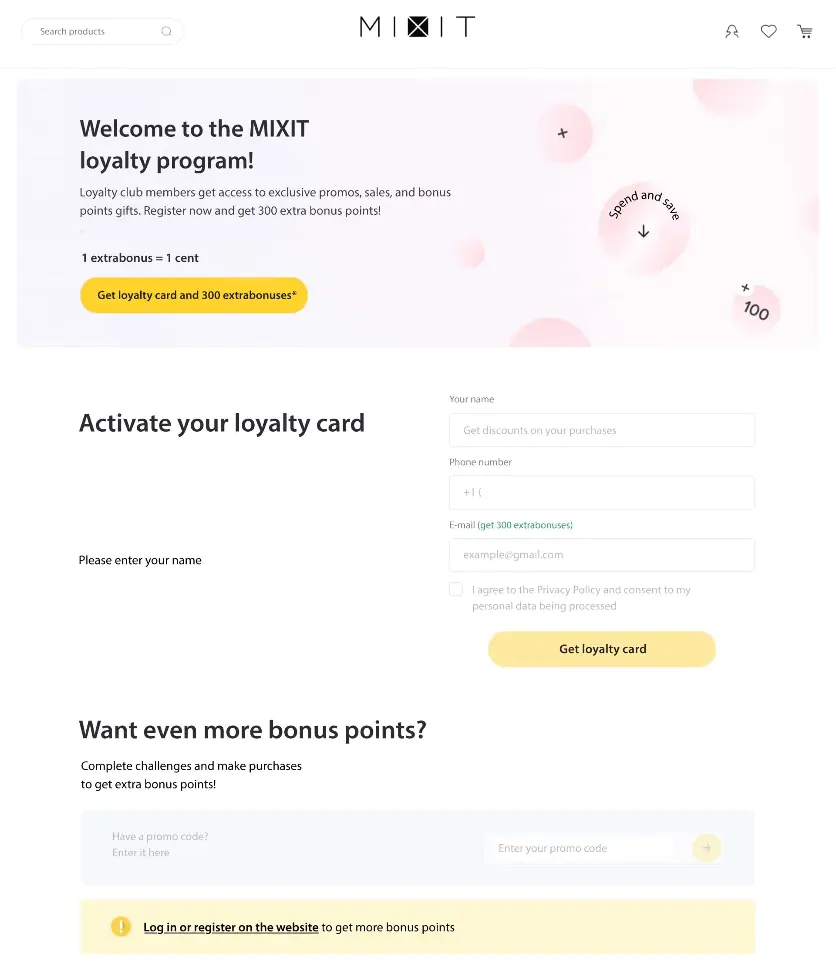
An email encouraging the customer to activate their loyalty card and receive 300 extra bonus points.
The loyalty program worked only on our website and in the retail channel. In order to maintain these sales channels, we decided to look at the customer base from a different point of view in order to figure out who our loyal customers are, those who continue to buy from us, and don’t switch to marketplaces. Last June, we identified three customer segments:
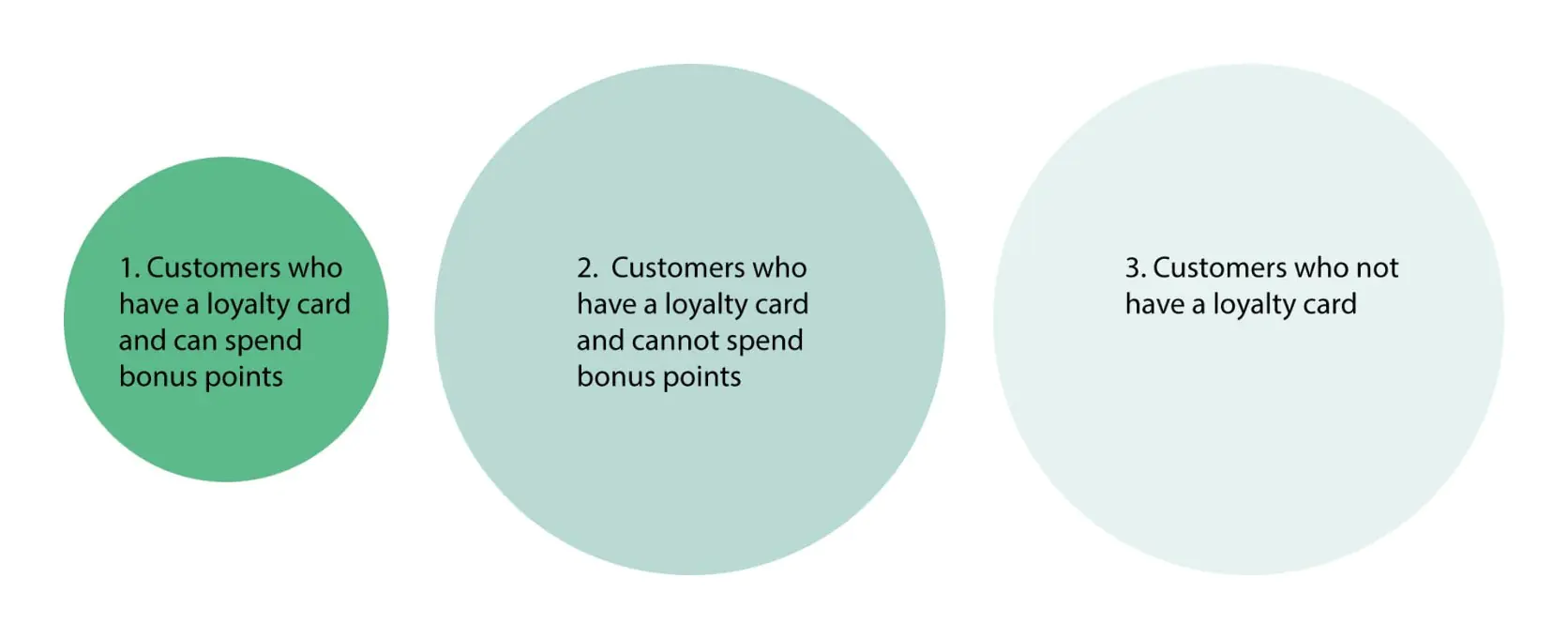
The first segment represents customers who are registered in the loyalty program and have provided all the data, including their email and phone number (which was a mandatory condition for debiting bonus points at the time).
The second segment is customers who are registered in the loyalty program, but have not completed the questionnaire, which makes them unable to spend bonus points.
The third segment is customers who make purchases on the website, but for some reason haven’t yet joined the loyalty program.
It’s not surprising that the first segment had the highest frequency of purchases and the largest average order value. That’s how we came up with our goal. The idea was to transfer the biggest possible number of customers from the second and third segments to the first one.
It took seven hours for the initial segmentation of clients. We compared the spending patterns of cardholders to those of non-cardholders and analyzed the results, refining the segmentation conditions. We discovered that those who use their bonus points are our ideal segment! The second round of segmentation and a final check took an additional five hours. In just a few working days, we segmented our customer base, drew conclusions, and began developing mechanics for the loyalty program participants.
Tools That Helped Us Turn Customers into Active Participants of the Loyalty Program
In order to increase the number of active participants in the loyalty program, we did the following:
- Issued loyalty cards to everyone who had previously made purchases on the MIXIT website. Sent automated emails with a notification about the accrual of bonus points to customers who had never been registered in the loyalty program.
In order to enable the customer to find all the information on one page, we updated the loyalty program page. Now, we emphasize the value of participating in the program, we explain how to register, how to receive welcome bonus points, and we also added an FAQ section.

- We simplified loyalty program enrollment. We made the assumption that it was difficult for customers to fill out a long questionnaire. We collected feedback in stores and confirmed our hypothesis. Now, when registering, it is simply enough to indicate a name and phone number, which is confirmed by an SMS code.
We used automated emails to inform customers about the new rules of the loyalty program.
The email highlighted that it is now much easier to get a loyalty card and spend bonus points. All the customer needs is their name and phone number. We mentioned free extra bonus points, which are credited when joining the program. This helped stimulate interest in the loyalty program.
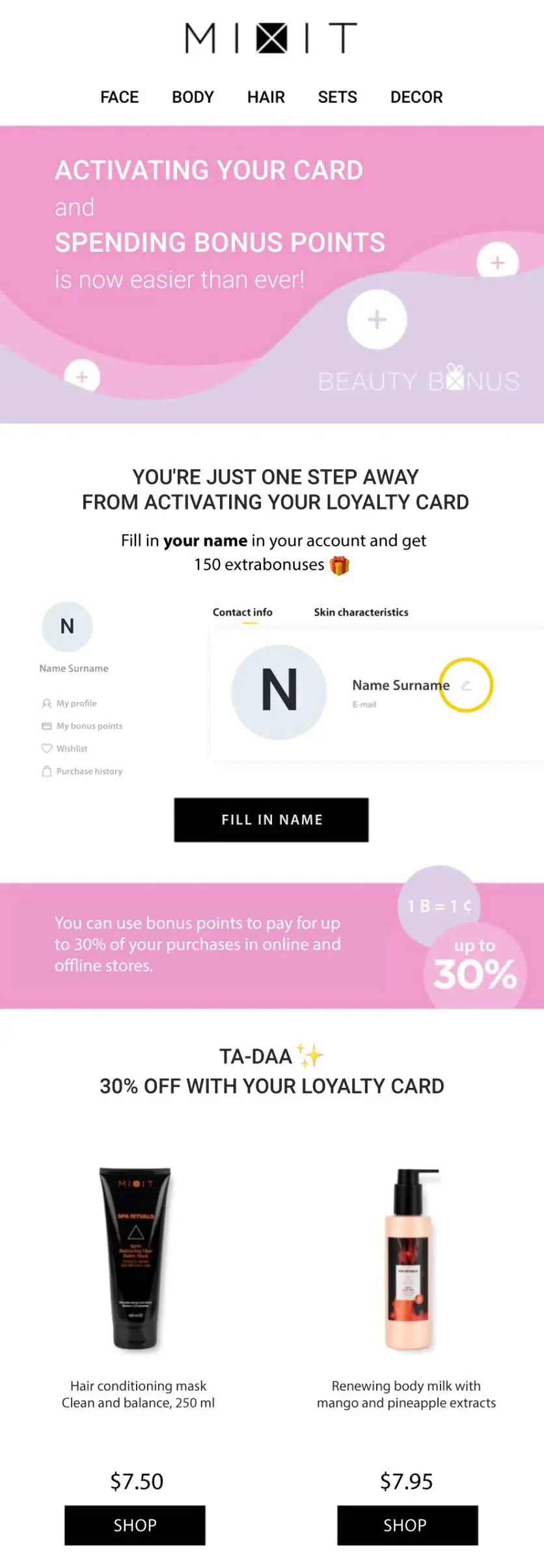
An email with the loyalty program’s new rules
- We decided to additionally encourage our loyal customer segment. If participating in a loyalty program brings additional benefits, this naturally encourages customers to join it.
To accelerate the loyalty program using email campaigns, we decided to show dynamic content blocks and widgets. For example, if customers still don’t have a loyalty card, we display a widget proposing to register one. If we know that the customer already has a loyalty card and a certain amount of bonus points on the account, we display its balance and encourage the customer to spend their points. This increases the click-through rate and conversion of campaigns.
We carried out five experiments in order to understand which advantages are most interesting to our customers:
A one-time accrual of extra bonus points for opening an email and completing a survey. We put together a template with a survey on the frequency of emails, then launched two automated campaigns. One rewarded extra bonus points if the email was opened, and the second did so if the survey was completed. It literally took us only two working days from idea to launch.
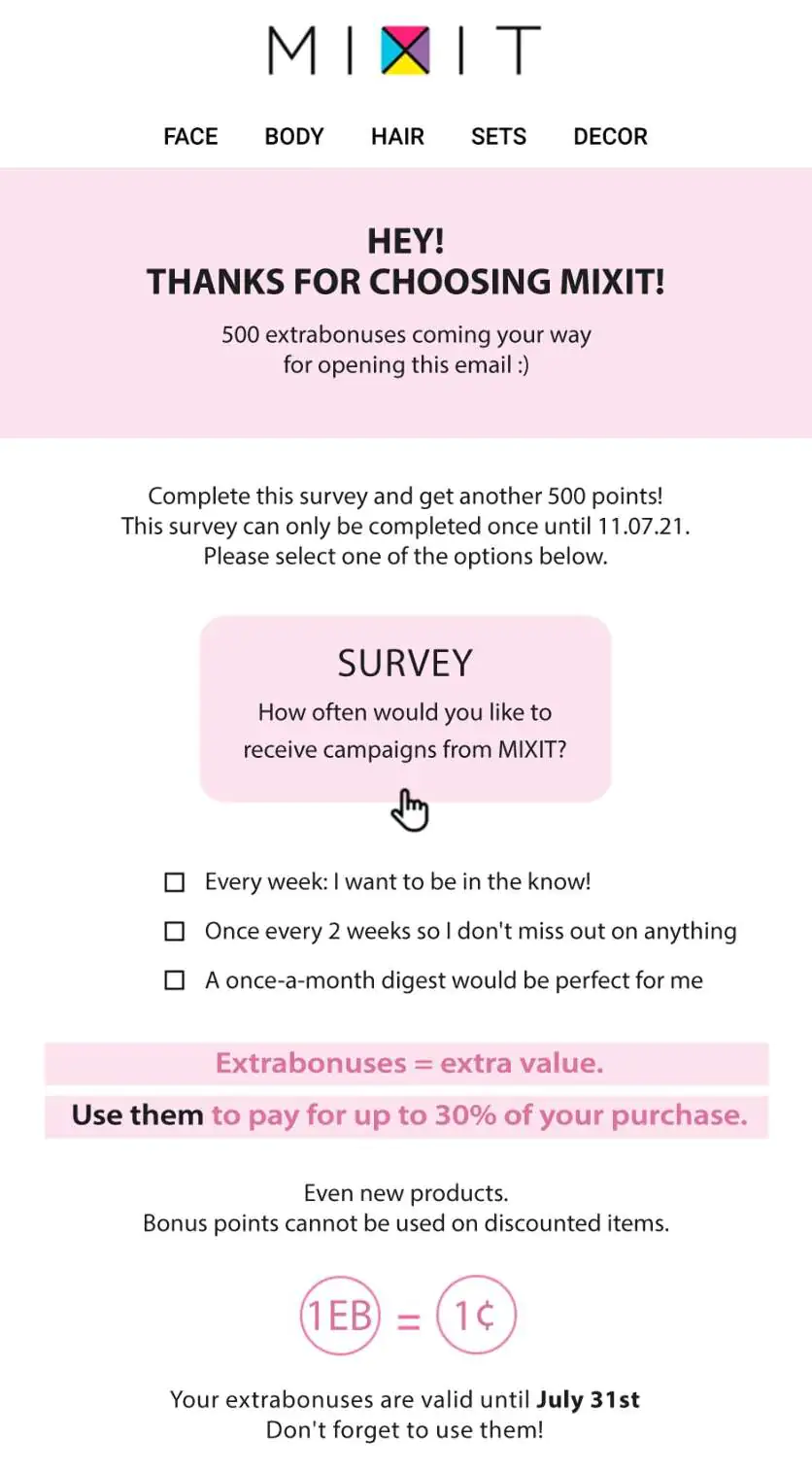
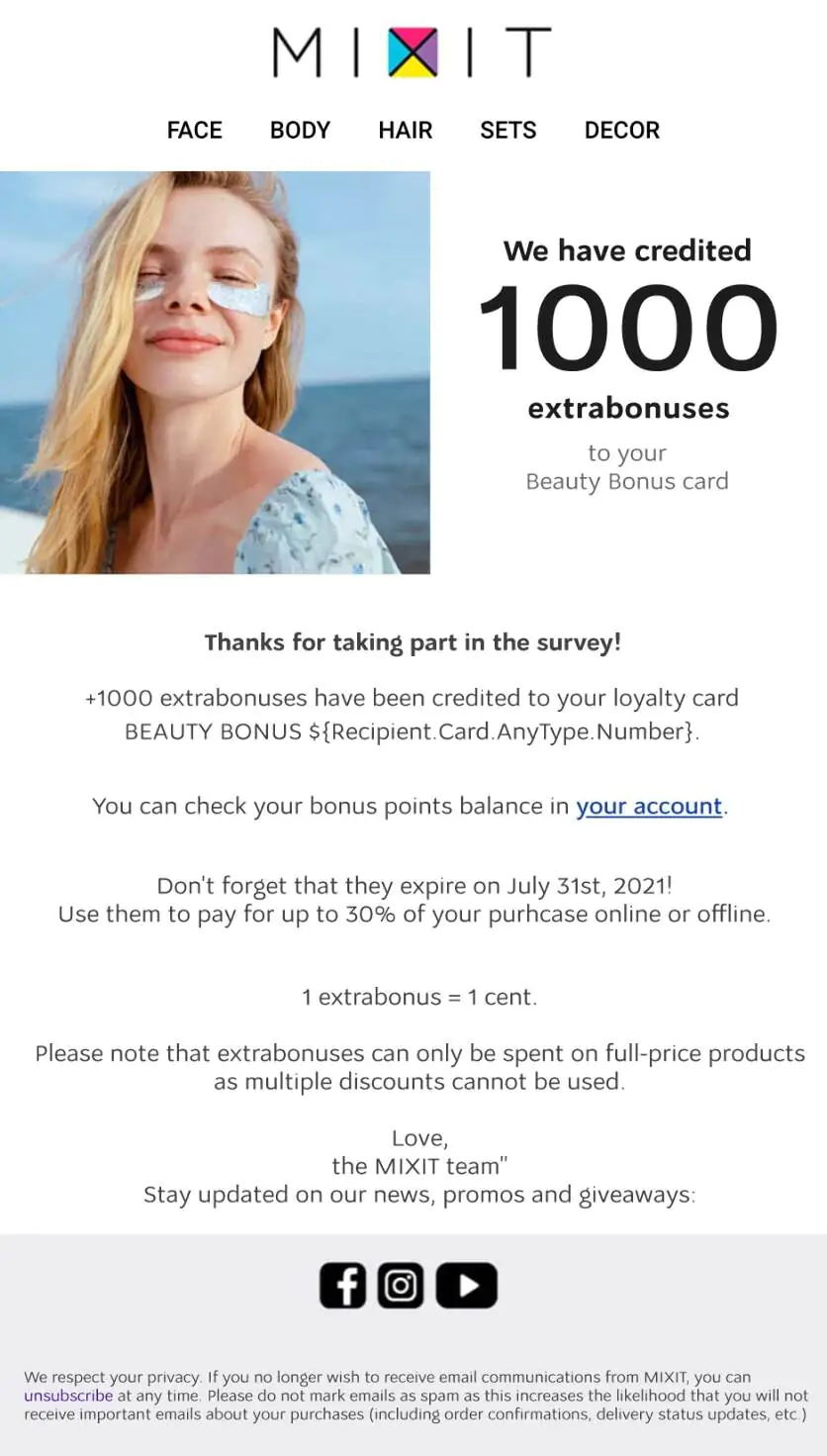
The email not only stimulates customers by offering them extra bonus points but also helps us find out how often they want to receive campaigns
The campaigns turned out to be really efficient. The number of sales attributed to the email channel increased dramatically and this effect persisted for two days after the promotion.
VIP bonus points for one-off promotions. Since extra bonus points have proved to be really efficient, we came up with the idea of introducing VIP bonus points. They are valid only in specific stores for a certain timeframe and enable targeting promotions to the stores that need them. We are currently testing bonus points and would like to see whether customers come back to use them.
We use visual elements from one of the photo shoots and reciprocally referential images for the stylistic coding of a specific promotion. This makes it easier for customers to link a personal offer in a received email with a pop-up on the website or a retail poster.
More Extrabonus points. We award extra bonus points when customers purchase certain goods during a promotion. Customers receive 20%-25% extra bonus points instead of the usual 5% bonus points.
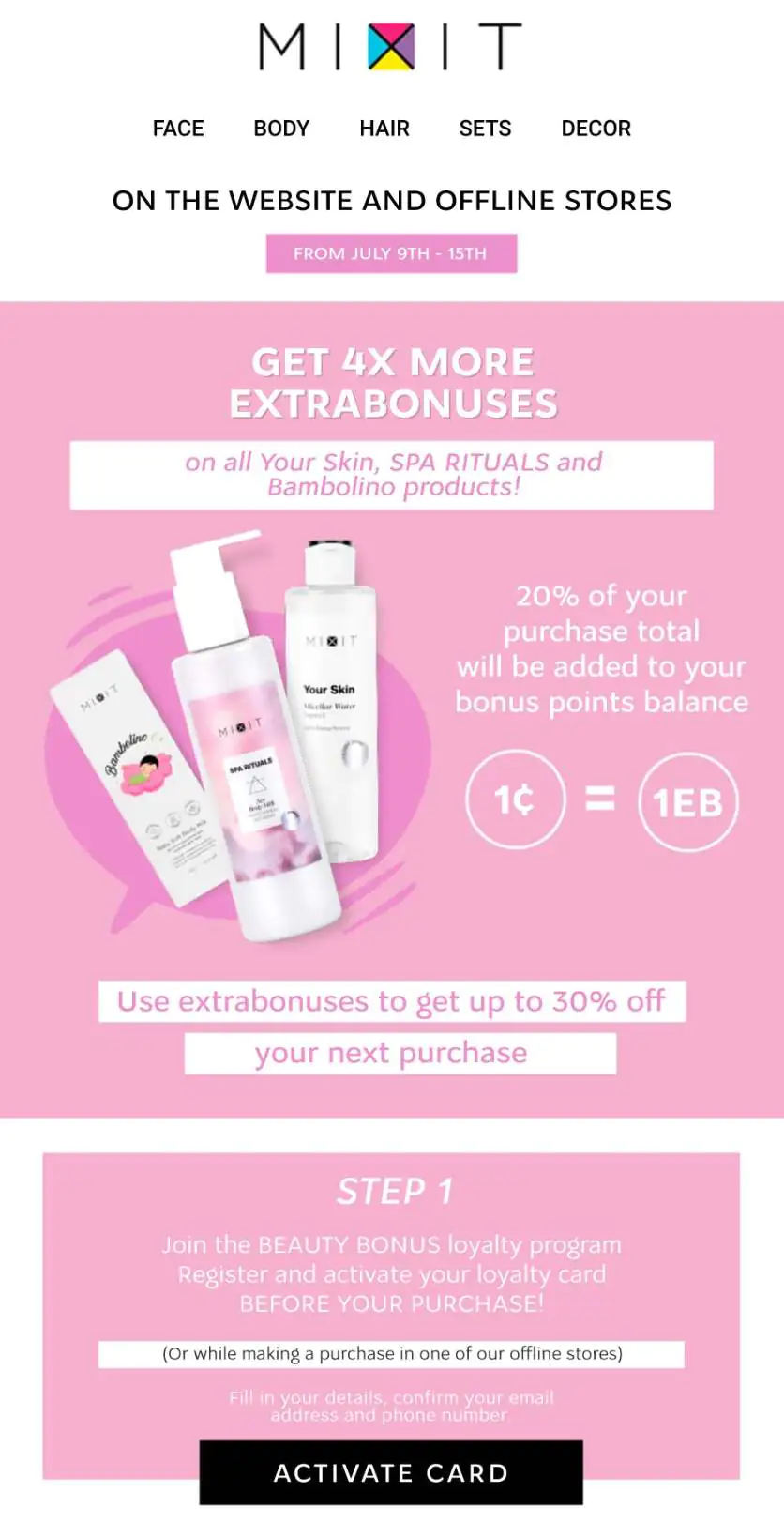
We award Extrabonuses for products that we want to promote among our customers
I personally communicated with customers at the POS and I can safely say that they are really happy with the additional bonus points rewarded for seasonal goods. The customers understood that the promotion was short-term and planned to return soon to spend their bonus points. However, thanks to communication with customers in brick-and-mortar stores, we realized that the promotion does not interest customers that aren’t ready to make a purchase right now. As a result, we kept using Extrabonuses to draw attention to new products.
Gamified pop-ups on the website. We have been using pop-ups since 2019, however, we did not introduce the Wheel of Fortune pop-up until 2021:
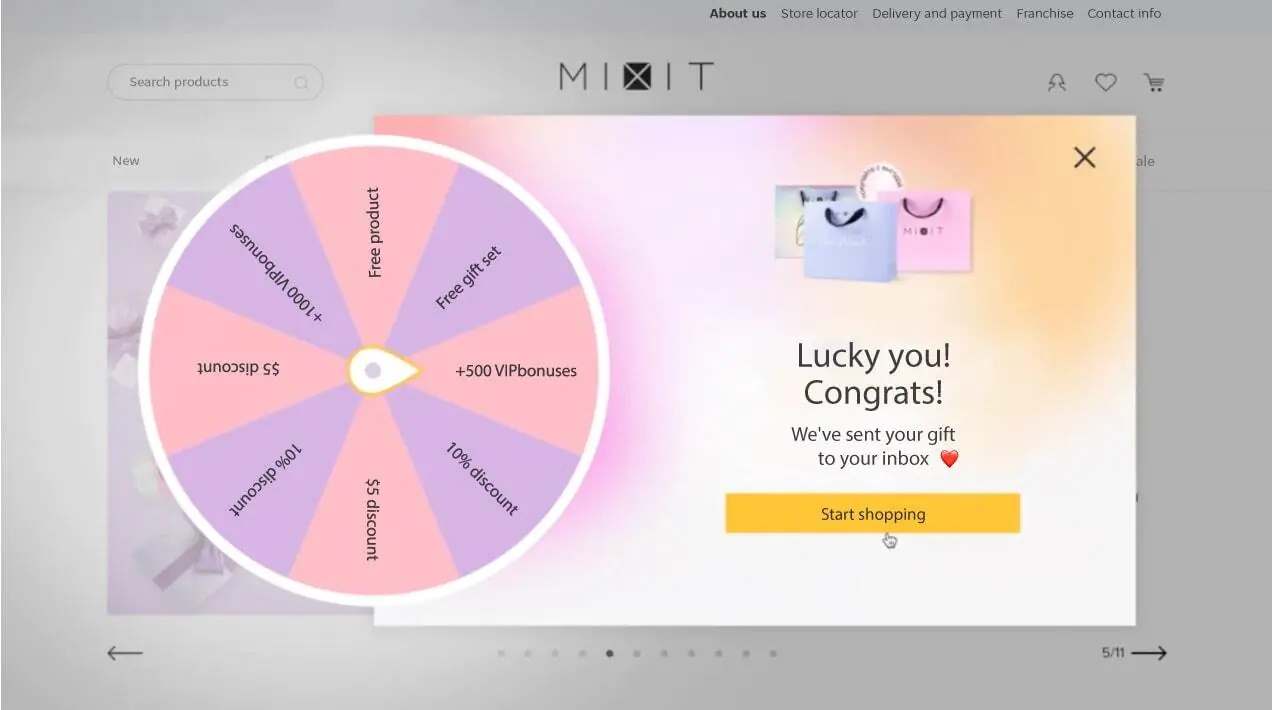
Pop-ups definitely increase customer loyalty and motivate them to make a purchase. If customers visit the website but aren’t ready to make a purchase, then a discount or a gift can change their decision. Pop-ups are convenient for customers: simply enter an email or phone number. As a result, the customer base can grow quite quickly.
Pop-ups help to attract new clients and reengage old ones. We noticed that old customers, who previously unsubscribed, follow pop-ups and leave their data. If we take 4 out of 5 of our pop-ups, the ratio of old and new customers will be 50/50.
Another interesting example of a pop-up is one for winter holidays:
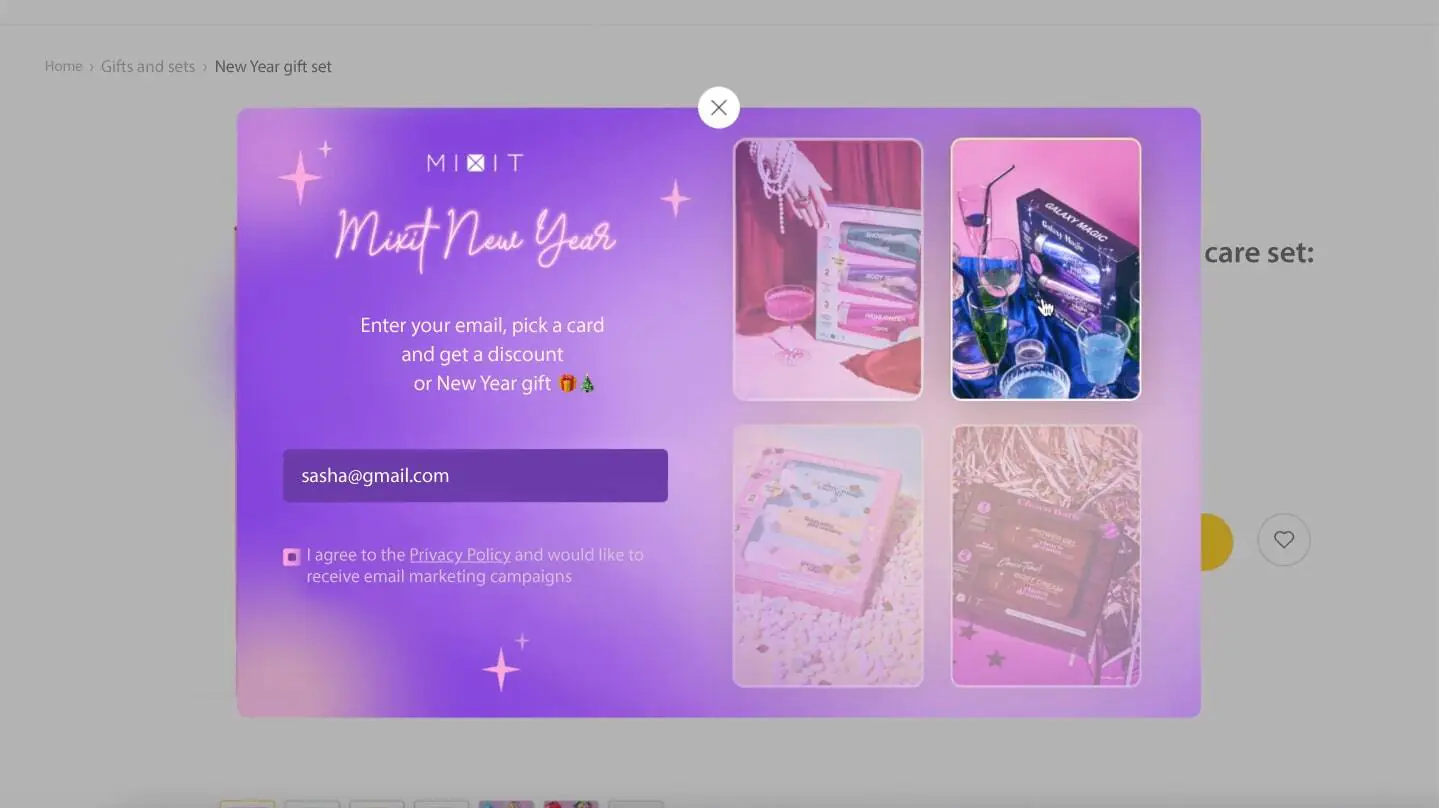
If the customer was already a loyalty program participant, bonus points were immediately added to their account. If not, it they were added after registration using a phone number.
Promotions stimulating customers to return. Suitable for driving sales in low season. In our case, it was January, when we experienced a lull after winter holiday shopping.

For every $10 in the December receipt, we award 1000 bonus points for purchases in January. Customers find out about this promotion through our email campaigns.

An email about the accrual of bonus points is sent automatically
This is how we stimulated an increase in the average order value in the first period of the promotion and motivated customers to make a purchase in the second period. We noticed that customers are actually returning. Every fourth person who participated in the promotion in December will spend their bonus points in January. For these promotions, we use both regular bonus points and VIP bonus points. Both are quite efficient. Customers love these promotions. They really increase loyalty.
How We Plan to Develop the Loyalty Program
Leave two bonus accounts. We plan to remove extra bonus points and reward customers using regular and VIP bonus points only.
Award bonus points using promo codes. This is in fact something that has already been implemented. We have added a field for a promo code in the customer’s account on the website. Customers will receive their promo codes in promotional email campaigns. The second option is to use promo codes as one of the tools for dealing with negative feedback. We will not just apologize to the customers, but give them bonus points.
Launch a new survey format. We will give bonus points to customers who complete our surveys. It pleases loyal customers and generates repeat sales.
Some Tips for Managing a Loyalty Program
- If you decide to implement a loyalty program, make sure you study and understand your customer base. Ideally, it’s worth implementing a loyalty program in B2C using a customer base of no less than 400,000 people. Segment and cluster your customers. This will help you understand which loyalty program and which campaigns you need. If you’re working with a smaller customer base, you can launch a loyalty program in several stages. Prepare the infrastructure, register promotions, and start issuing cards to customers but without the ability to spend bonus points. After 3-6 months, once the customer base has grown, launch a full-scale loyalty program.
- When launching, be sure to take into account your team’s opinion — including developers, programmers, and the retail network. At the same time, technical nuances that may seem very serious at the start can be quite easily solved if they are divided into small tasks.
- Conduct quick tests over the course of one or two weeks. Use the simplest layout, banners, or pop-ups. Set goals that will envisage the success of your loyalty program. Run the mechanics, get the results, and decide whether to scale the mechanics or test a new hypothesis.
- Regularly check the customer journey on the website and in retail channels. This will allow you to understand what prevents them from using their loyalty cards and at what stages.
- Analyze data. It doesn’t really matter if you have an analyst on your team or if you use ready-made reports. What’s really important to understand is that marketing without numbers and conclusions is a waste of time.







